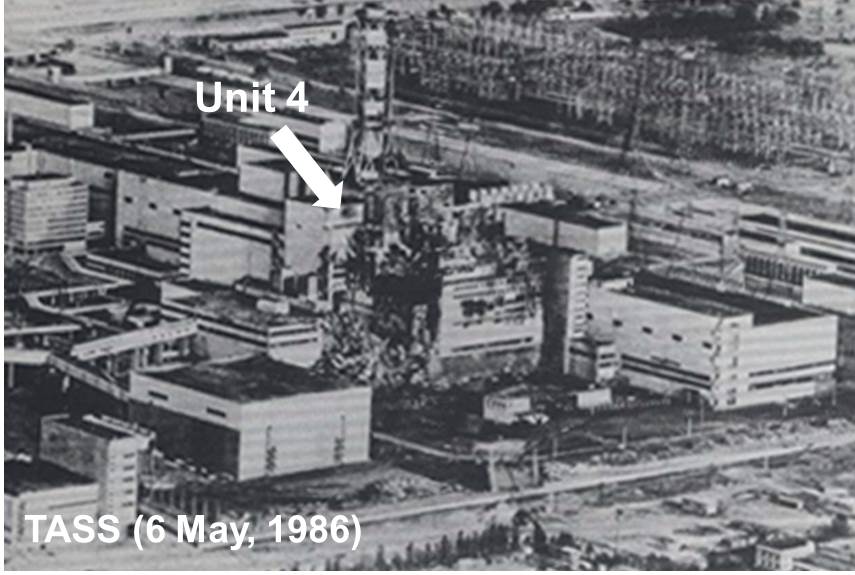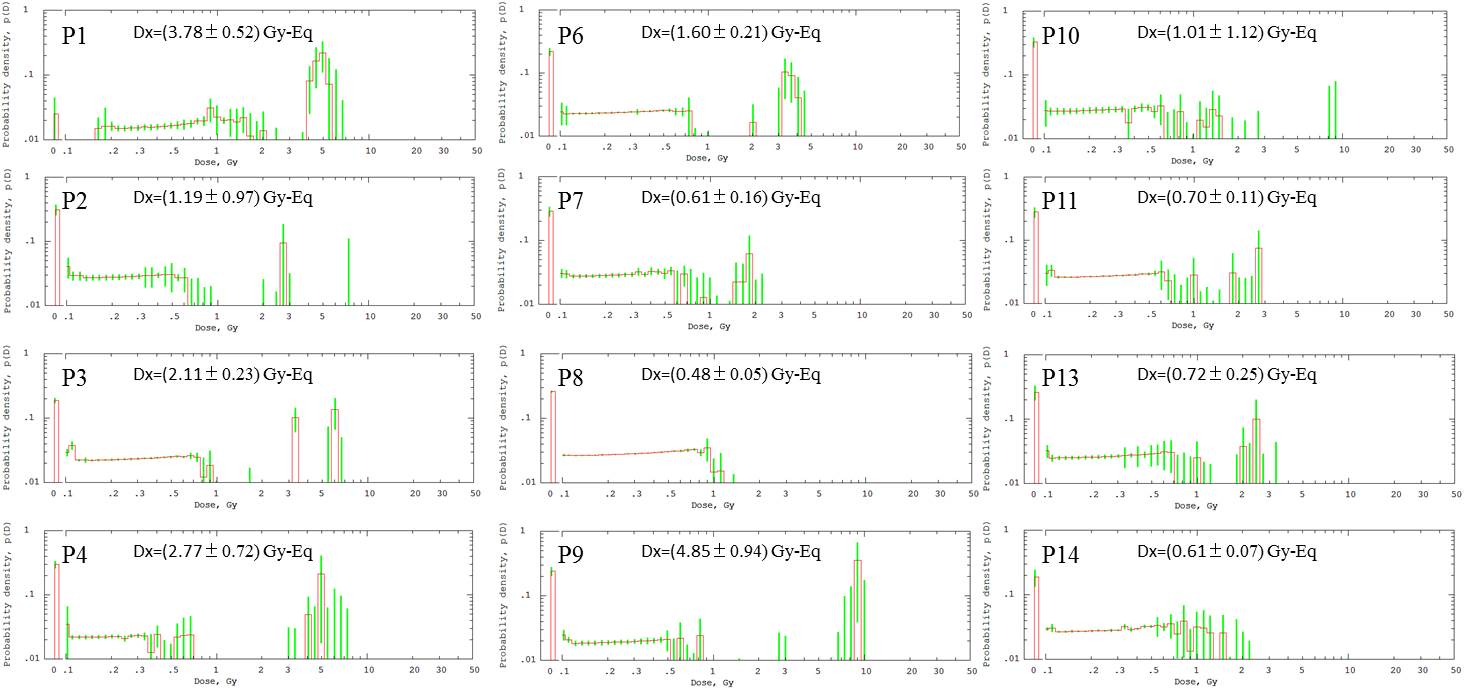The accident occurred early in the morning of 26 April 1986 during low-power test operation of the Unit 4 reactor. The safety system has been switched off and unstable operation led the uncontrollable power surge to occur, resulting in successive steam explosions that severely destroyed the reactor. A massive amount of radioactive material 5200 PBq (I-131 equivalent) was released into the environment (UNSCEAR 2000 Report). Several hundred subjects were exposed to high doses of beta- and gamma-irradiation either as working personnel within the reactor immediately after the accident (emergency workers). Emergency workers include stuff of the power plant (Units 1, 2, 3 and 4), construction workers at Units 5 and 6, firemen, guards, and stuff of the local medical facilities. Among 134 emergency workers who showed acute radiation symptoms, 19 patients received bone marrow transplantation, and 28 died within few weeks after (19 more subsequently died between 1987-2004, but the causal relation to radiation is not known). The followings are the summary of the exposed populations (UNSCEAR 2000 Report).
| . | Emergency workers (approximately 600) | Acute radiation symptoms (134) | Number | Dose | |
| 41 | <2.1 Gy | ||||
| 50 | 2.1-4.1 | ||||
| 22 | 4.2-6.4 | ||||
| 21 | 6.5-16 | ||||
| Recovery operation workers (approximately 600,000) (Liquidator: Clean-up workers) |
Military men | 240,000 | Monitored | ||
| Citizen | 360,000 | ||||
| Highly contaminated area | Evacuees (<30 km) | 116,000 | &rt;100 mSv | ||
| Residents | 10,000 | <100 mSv | . |

